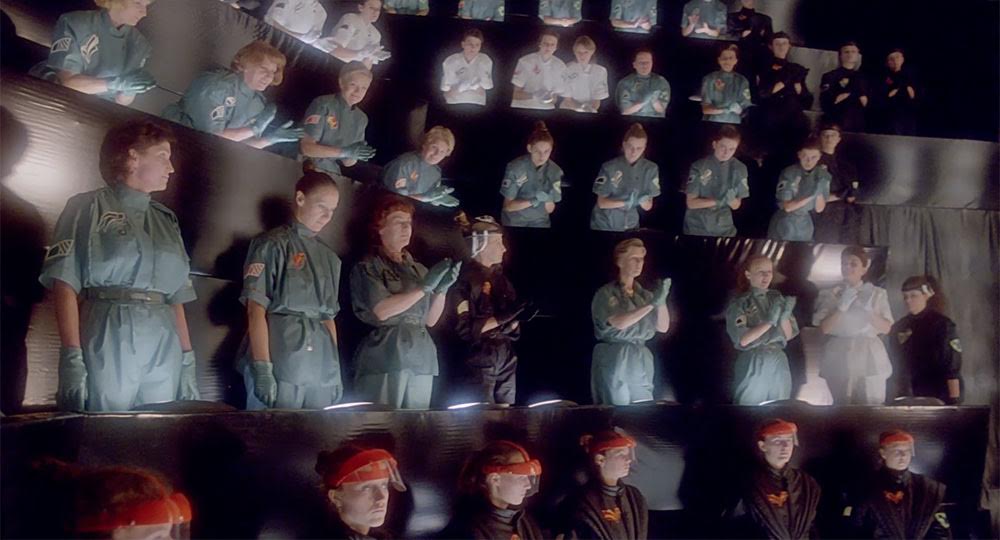Laughter in the dark: five Eastern Bloc sci-fi comedies you need to see

In the face of stifling constraints on the arts, some science-fiction filmmakers in the Eastern Bloc used humour to explore the possibility of a different, better future. From a Czech sex symbol on a mission to kill Einstein to the “Soviet Monty Python”, here are five sci-fi comedies worth watching
The future of the socialist man was supposed to be bright, victorious, and solemnly beautiful, the road there paved by technical progress and self-sacrifice. Yet among the socialist people themselves, some had doubts as to whether human nature could meet the demands of the new political order so quickly. At a time when the USSR was making its foray into the space race, socialist art, particularly literature and cinema, was contemplating deeply what lay ahead. Artists were fascinated by the opportunity to employ the exciting, spectacular scenery of the cosmos and explore age-old conflicts in a new light.
Science fiction was soon fully mastered – not without the help of official propaganda – and the framework was expanded to sub-genres such as comedy. As it turned out, one could say a lot about the present day under the disguise of nerdy humour, thus addressing both the wide-eyed craze about the future and the current state of affairs. And as this Aesopian approach evolved in the arts on the eastern side of the Berlin Wall, jokes at the system’s expense became more and more bitter. But sci-fi comedies were also a therapeutic method for imagining a benevolent future where daily necessities would be provided for, there would be no frontiers, and… female nudity would be the norm.
The Mézga Family (Hungary, 1969-1978)
Director: József Nepp
Pannonia was the biggest animated film studio in Hungary. After decades of unremitting toil and hundreds of shorts and full-length films, it even won an Oscar in 1981. The 1960s were a particularly fruitful period in Pannonia’s history, with a plethora of household names — animators, scriptwriters, directors — on the rise. This was also when József Nepp was becoming famous for his early works: so the studio entrusted him with a cartoon series in order to respond to the demands of TV as an up-and-coming medium.
From 1969 to 1978 Pannonia produced three seasons of The Mézga Family, with 13 episodes of around 20 minutes each. Dubbed the Hungarian version of the The Simpsons, the Mézgas are a model nuclear family from the socialist era that can be seen today as a caricature of the middle class as it then was. Most popular is the first season of the show, titled A Message From the Future — The Fantastic Adventures of the Mézga Family. Thanks to their wunderkind son, the Mézgas manage to make contact with MZ/X, a descendant living in the 30th century; every time they ask him for a banal favour, disaster ensues.
I killed Einstein, Gentlemen (Czechoslovakia, 1970)
Director: Ordřich Lipský
I Killed Einstein, Gentlemen opens with a long scene of two bearded humans kissing. From their dialogue we learn that women grow facial hair and can no longer have children thanks to nuclear experiments. This scene depicts the reality of life in 1999, as imagined in Czechoslovakia at the end of the 1960s. To solve these future problems, the UN sends a team of world-renowned scientists to the past to kill Albert Einstein, the father of nuclear physics. One of these scientists, played by Czech sex symbol Jana Brejchová, falls in love with Einstein, and with the Butterfly Effect in full swing, it becomes clear that she has rather different plans when it comes to rewriting history.
A few years ago, I Killed Einstein, Gentlemen became very well known when someone discovered that the film predicted the use of selfie sticks. Nevertheless, the imagery, the sound design, the props and the costumes are stunning overall. It might seem surprising that such a lavish production with so precise a futuristic vision might have been a product of socialist cinema, but let’s not forget that Jindřich Polák’s Icarus XB-1 (often compared to the work of Kubrick and Tarkovsky), was released seven years earlier.
Sexmission (Poland, 1984)
Director: Juliusz Machulski
>
Just like in I Killed Einstein, Gentlemen, Sexmission’s creators also had a special plan for the women of the post-nuclear future. In 1991, two volunteers go into deep hibernation for the sake of a revolutionary experiment. Instead of waking up three years later as planned, however, they wind up in 2044, when the “second sex” is the only one left — men have gone extinct and women reproduce in vitro. At first, both males from the past are considered funny anachronisms, but soon the militant feminists starts to see a threat in their presence.
Much of the comedy dynamic comes from the way the principal duo is developed, showcasing the two archetypal socialist characters — the opportunist and the idealist (respectively, Jerzy Stuhr and Olgierd Łukaszewicz, two of the most acclaimed Polish actors). One could write a separate comedy just based on the saga surrounding the manufacture of hundreds of disco-fetishist costumes, or around the tactical manoeuvres involved with getting this past the censors, but now the film stands as a testament to the dangers of any totalitarian state that goes against nature. More topical than ever, in 2008 Sexmission was named Polish Comedy of the Century by Film magazine.
Kin-dza-dza (USSR, 1986)
Director: Georgiy Daneliya
One of those Soviet super-productions that navigated the traps of censorship and logistical peripeteias, Kin-dza-dza! received a final cut and wide release only thanks to the name of the director attached to the project — Georgiy Daneliya, who also developed the script with his ever-present co-writer Revaz Gabriadze. The story is the perfect quest narrative: a construction foreman, Vova, and a Georgian student, Gedevan, meet completely by chance on the streets of Moscow, trying to help a man in rags who claims to have arrived from another planet. In total disbelief, they get teleported to the galaxy Kin-dza-dza, and their interstellar odyssey ensues.
Watching this film today, with its tongue-in-cheek take on the provincialism and colonialism in the USSR’s politics, only the chaos around perestroika can explain the film’s release. But its message about the urgency of environmental issues is more than relevant nowadays. Many see Georgiy Daneliya’s masterpiece as the Soviet answer to Monty Python because of the absurd gags, or Blade Runner because of its attention to detail and existentialist overtones. The most fitting reference though would probably be Douglas Adams’ The Hitchhiker’s Guide to the Galaxy — only without a guide.
The Thirteenth Bride of the Prince (Bulgaria, 1987)
Director: Ivanka Grybcheva
One of Bulgaria’s best loved filmmakers, Ivanka Grybcheva’s work in the 1970s was largely dedicated to full-length films and TV series for children. Her most ambitious project, The Thirteenth Bride of the Prince, was marketed for kids too, but was actually entertainment for the whole family, with the cast featuring some of the most recognisable faces of Bulgarian cinema and theatre. The premise might come across as controversial: the princess is ugly and spoiled, the prince stubby and obsessed with the idea of finding a bride who can respond to his “I love you!” in English. There are court intrigues, amateur magicians, an honest peasant couple and a flying saucer carrying three teenagers that crash-lands from another planet.
Apart from the obvious Star Wars influences, The Thirteenth Bride of the Prince could in fact interpreted as Grybcheva’s commentary on the ruling class in late socialist Bulgaria. The proud daughter of partisans and celebrated antifascists, the political subtext in this work of hers is unmistakable, even if well masked beneath cheeky humour and memorable dialogue.


